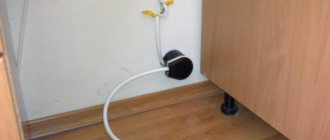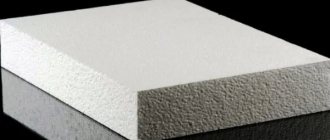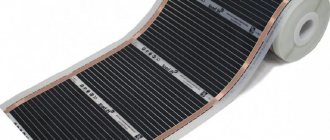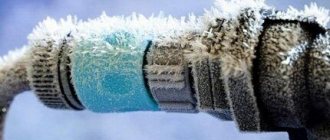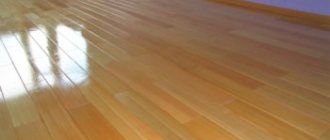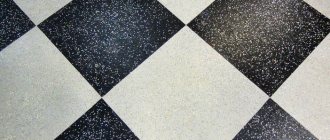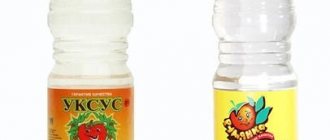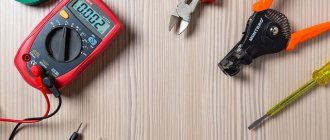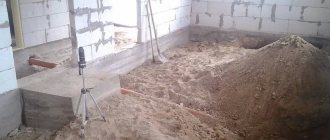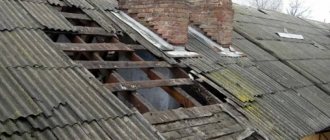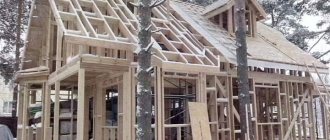During major renovations or arrangement in new buildings, it is recommended to carry out repair work from above: starting with the ceiling slab and completing it with decorative finishing of the floor, so as not to damage the coating in the process. However, in practice, everything is not so simple and some repairs have to be done in conditions where the floor covering has already been manufactured. In such a situation, it is extremely important to protect the finish from dust, dirt, scratches, deformation and damage.
What is
Covering film for repairs is a material made of polyethylene or polyvinyl chloride. It is used to protect various surfaces from contamination. It is characterized by strength, the degree of which depends on the thickness of the film.
So, the following sizes of material are available on the market:
- Up to 40 microns. This is a low-density material that breaks easily if handled carelessly.
- Up to 120 microns. Medium density film that can withstand moderate loads.
- Up to 200 microns. High density material that can withstand even significant loads.
When checking the density of the covering film, they take into account whether it was produced according to GOST or not. The fact is that material manufactured according to GOST has an error in thickness of up to 10 microns, and if not, then the error can even reach 40 microns.
Sequence of apartment renovation - a guide to action
In this article we will look at the sequence of apartment renovation and provide some guidance to action, which will make working much easier. If you decide to start renovations in your apartment, then a lot of questions will arise even before it starts. Everyone knows that in any business it is better to determine a clear sequence of actions than to then rush from one thing to another, try to do everything in time, waste your nerves and time correcting your own mistakes.
Film for screeds
Film labeled LDPE is perfect for screeds. Such a film must be manufactured correctly, the best parameters must be present, since tightness is important for this material.
Often the thickness parameter is from 0.2 millimeters.
Purpose
Covering film for repairs, in addition to protecting surfaces from contamination, is used for the following purposes:
- preventing liquid leakage;
- separation of layers of structures;
- base isolation;
- vapor barrier of surfaces.
Depending on the purpose of application, a material of a certain thickness is selected. The more complex the task, the denser the film should be. Thus, the material is used for any repair or construction work. Most often, they cover interior items to protect surfaces from paints, dust, etc. In addition, it is fixed to the floor, walls, and other surfaces.
Rules of application
Even an inexperienced user has no problems using the material. It is placed on the surface that needs protection, and the edges are fixed with masking tape. If the base needs to be protected not only from dirt, but also from mechanical damage, then cardboard, a blanket, etc. can be placed under the film.
Classes of special polyethylene films
Vapor barrier
This type of building films is used to insulate surfaces to protect walls and roofs, as well as ceilings, from steam and moisture. This type of construction films is highly resistant to damage.
Roofing
Installed on the roof, as well as on the top of the house. This film is used against the wind.
Waterproof
It is not surprising that they are designed to protect buildings from moisture. This film demonstrates itself remarkably well in protecting lower and basement floors. It is used in areas that are exposed to precipitation, such as roofs.
Foundation film
This film differs from others in its strength and resistance to stress. It is used to insulate the walls of a building. Also, such a film does not allow water from the street into buildings.
Foil films
The foil that makes up the film greatly increases the thermal insulation capabilities. Often this material is used to insulate ceilings and walls that interact with the street. The film can allow steam and condensation to pass through.
Roofing film
To ensure that the roof does not allow water to pass through and is durable, you need to make the right choice. There are several types that are great for this job.
- The first material is a vapor-proof film, the second is a roofing membrane, and you can also use foil that allows steam to pass through.
- Foil can provide a home with good thermal insulation as well as water insulation.
Film for the protection of reservoirs
Not all films can be used for a pond. For this purpose, there are specialized construction films that are created for this purpose. For example, PVC or foil made from polyethylene.
These films are perfect for covering and building a reservoir. Ordinary films will not work, they will last a couple of seasons at most, the fact is that they are thin and susceptible to ultraviolet rays. But films with PE or EDPM marks are best suited.
- The cheapest option is polyethylene film, but over time it loses its properties of elasticity and rigidity. This happens due to constant stress, solar radiation, oxygen, and they are also very easy to scratch.
- The best type is PVC film. It is, of course, expensive, but of the highest quality. Thanks to the polyvinyl chloride, which is included in the composition, this material is durable and not subject to various damages.
The most expensive class of films used in reservoirs is EPDM. This material, which is made of elastomer, is glued together with a solution.
Floor film
Basically, moisture insulation for floors is made from a construction film made from polyethylene. The most suitable thickness is two to three tenths of a millimeter. It is better to insulate the floor from moisture earlier, before installation.
In bathrooms, toilets, and other areas of the house where there is a lot of moisture, you need to use underfloor film. Construction film is also an excellent vapor barrier.
Easy way
Cellophane film and cardboard sheets will help protect the floor from the appearance of defects. The film is sold in any hardware store or hypermarket. Choose the densest options. As for cardboard, any type of cardboard will do, such as old boxes. The film is laid on the floor and fixed at the baseboards, at joints and overlapping areas with tape. A layer of cardboard is placed on top. On top is another layer of film.
Don't buy cardboard on purpose: Most supermarkets offer free cardboard boxes and sheets of cardboard that are thrown away every day. Before use, be sure to remove all staples and other metal elements from the cardboard sheets.
Advantages and disadvantages
Covering film has the following advantages:
- water resistance;
- resistance to low and high temperatures, sudden temperature changes;
- strength, elasticity;
- functionality;
- vapor tightness;
- resistance to the negative effects of aggressive biological environments;
- a light weight;
- transmits both artificial and natural light well;
- increased flexibility, which indicates ease of use;
- resistance to condensation;
- a large selection of materials of various types and thicknesses;
- affordable price;
- easy fixation even in hard-to-reach places;
- not subject to rotting.
The disadvantages include the following:
- cannot withstand increased loads;
- if the thickness of the material is too small, it will tear if handled carelessly.
How can I cover furniture during renovation work?
Repair is equivalent to a fire, because dust penetrates into all hard-to-reach places like smoke. After repairs, it will always be difficult to clean everything, and this is not a pleasant task. To keep your apartment as clean as possible, you need to prepare in advance for the upcoming improvement of your apartment. Especially if there is no opportunity to move, and the renovation will take place one by one in each room.
On the one hand, it is very convenient to do it in rooms one at a time, but on the other hand, living in such a room is very problematic. Often the situation is such that there is nowhere to move. Being close to workers is also highly desirable. Life experience shows that they do not always correctly understand the wishes of customers.
Advantages of covering film
This material is highly elastic, often completely transparent, and is based on LDPE (high-density polyethylene). It has many advantages over garden and cling films:
- easily stretched and compressed;
- tightly fits any hard or soft surface without flaws;
- the shape of the surface does not matter;
- does not require heating for a strong connection;
- this film is dustproof;
- has ideal water-repellent properties;
- excellent strength under any deformation and mechanical stress;
- Easy to attach and effortless to remove.
With such characteristics, covering films for repairs have become not only reliable protection for furniture and interior items, but also turned out to be very popular for transporting various goods on pallets - palletizing. And this is not only furniture when transporting from one house to another apartment.
Polyethylene film is:
- reliable fixation of cargo stowed in flight;
- facilitating loading and unloading operations;
- reliable protection from damage and dust;
- compact placement in containers, transport bodies and wagons;
- the ability to quickly transport and stow cargo using a forklift and other lifting mechanisms;
- optimized storage using multi-tier racks;
- prompt delivery of any cargo to the warehouse or directly to the buyer.
How to properly lay floors in an apartment
The floor in the apartment is the most important part of it. Firstly, furniture and most of the equipment, washing machine, stove, bathtub, shower stall, toilet and other plumbing fixtures are installed on the floor. A person is constantly in contact with the floor, walking on it, often barefoot. Sometimes you have to lie on the floor, even sleep. The floor must be well adapted to cleaning, since any debris falls on it, liquids are spilled, and food remains are spilled on it. The floor separates us from the people living in the lower apartment, and the comfort of the apartment depends on how well it is insulated.
Source
Varieties
There are several types of covering film, which allows you to choose the best option for specific purposes.
Diffusion
A universal material that is used for almost any type of repair work. It provides reliable protection of surfaces not only from contamination, but also from the negative effects of moisture, wind, and subzero temperatures. It is also used for thermal and waterproofing of structures. This film prevents the appearance of mold and mildew on the surface to be covered, and also prevents it from rotting due to the fact that it allows air and steam to pass through.
Polyethylene reinforced
A three-layer plank equipped with a reinforcing mesh, which provides increased strength of the material and the ability to withstand significant loads. In addition, this type is characterized by moisture resistance and high thermal insulation properties. It is because of this that the material has a wide range of uses. It is used, among other things, for arranging a protective canopy for storing supplies for construction work.
Windproof
Multilayer material, which is characterized by increased strength and resistance to the negative effects of moisture. At the same time, it is vapor permeable and does not interfere with air circulation. This allows it to be used for thermal and waterproofing of structures without fear that the surfaces under the film will be susceptible to rotting. In addition, due to the fact that the material does not block air movement, mold and mildew will not appear on the base underneath it.
Construction and technical
A material made from polyethylene by recycling it. It is black in color and is used to make bags for disposal of construction waste and other waste. The material is characterized by increased strength and the ability to withstand significant loads. It can also be used to cover surfaces, and then for its intended purpose.
Waterproofing
Material with increased resistance to the negative effects of moisture. For this reason, it is most often used in rooms with high humidity and outdoors. The film is used to protect building facades, when arranging the roof, foundation of a structure, etc.
Stretch
An elastic film that adheres tightly to any surface. In addition, it can be placed even in hard-to-reach places. It provides reliable protection of the base from contamination, the negative effects of moisture, and mechanical damage.
Packaging
Elastic material, which is characterized by increased resistance to the negative effects of moisture and sudden changes in temperature conditions. This film conducts electricity poorly and does not emit harmful toxic fumes.
Questions and answers
Can covering film be reused for repairs?
Yes, if we are talking about material of medium and high density. After use, it is washed, dried and stored.
Is it possible to fix the covering film on the walls if they already have wallpaper on them?
Yes, the material will help protect the decorative coating from dirt. However, to avoid damaging the wallpaper itself, it is recommended to use only masking tape for fixation.
Can covering film be used to protect bathroom fixtures?
Yes, the material is moisture resistant, so it is used even in rooms with high humidity. At the same time, to protect the plumbing fixtures from mechanical damage, it is recommended to first cover the devices with a cloth.
Will a covering film protect equipment not only from dirt, but also from liquids?
The material does not allow moisture to pass through. For this reason, it provides reliable protection of any surfaces from the harmful effects of liquids.
Covering film for repairs is a material that provides reliable protection of surfaces from dirt and the harmful effects of moisture. The main thing is to choose and use it correctly.
Types by purpose and density
In addition to the main varieties, covering films are also distinguished by purpose and density:
For interior items. Thin material that provides reliable protection of furniture from dirt. It is used for any interior items, as well as equipment that cannot be removed from the premises during repair work. The plank is distinguished by its simplicity and ease of use, and affordable cost. It is not reused, but disposed of along with construction waste.
- For floors, walls and other surfaces. A medium-density film that is fixed to bases to protect them from contamination. They use material up to 120 microns thick, since it can withstand mechanical stress. This is not surprising, because the craftsmen will have to walk on the floor covered with film. Thin material will immediately become unusable. Medium-density film is easy to use, resistant to the negative effects of moisture, and has average strength.
- High density waterproofing material. It is used, accordingly, for waterproofing work. Typically, the film is used when arranging the base of a structure, as well as the roof.
What can it be used for?
Covering film quickly found application in auto repair shops. Protective film with adhesive tape is especially in demand here, which ordinary citizens attach to walls for:
- carrying out painting and plastering work without dust. In this case, the film is attached to the ceiling at a distance of 1-1.5 m from the wall;
- protection of already painted surfaces;
- drawing a boundary between different colors or materials on the same wall.
As a matter of fact, for exactly the same purposes, painting film with adhesive tape along the edge is used for painting and tinting a car body. Taking into account paintwork materials in the process of body repair is very important - each enamel has its place! Primer, paint, varnish are applied to strictly defined areas, but all other surfaces must be separated - masked.
To mask (cover) areas not to be painted, a covering film with a paint rim is used. The tape itself serves as the base - it is crepe paper with a finely folded surface (crepe), which provides it with increased elongation when tensioned before breaking. The adhesive layer is natural rubber.
In the video: film with masking tape.
Polyethylene protection-camouflage has earned the trust of auto repairmen because... has a smooth, lint-free coating, high statistical data, a tight fit to the body, heat and wear resistance, easy to glue and remove after use, which allows painting as quickly as possible.
It is easy to buy such LDPE material at any hardware, construction or automotive store. Its cost is low compared to the cost of a car or new furniture damaged by careless repairs.
Using masking film (1 video)
What is the difference between construction films?
Of course, these materials differ in composition and the components from which they are made. Films are mainly made from polyethylene, but sometimes from other materials.
In addition, construction films differ in their thickness, diffusion resistance coefficient, water vapor, reaction to high temperatures, strength, and durability.
History of one inspection
Alas, “furniture” poisonings are now becoming more and more common. Here, for example, is one of them. At the Nizhny Novgorod music school, the source of widespread childhood diseases among children and teachers was identified. Formaldehyde and phenol were used to stain theater seats.
Rospotrebnadzor, which the school management actually contacted, conducted an inspection, which revealed that the permissible content of these harmful substances in the chairs was simply off scale. In addition, the maximum permissible concentration was also found in the finishing materials of the school: linoleum, wallpaper and parquet.
Selection rules
When choosing a covering film, consider the following points:
- Type of raw materials. The film is made from primary or recycled polyethylene. Any option is suitable for covering interior items, walls and other indoor surfaces. If the film is needed for outdoor use, then it is best to use virgin polyethylene. The fact is that the recycled material is not resistant to ultraviolet radiation, has little strength, and therefore quickly becomes unusable. In addition, the film is made of PVC. This is a dense material and is suitable for carrying out various types of repair and construction work both indoors and outdoors.
- Dimensions. The material is presented on the market in cuts and rolls. The first one is beneficial to buy if you need a small amount of film to cover interior items. Material in rolls is purchased if you need to cover the floor in several rooms, walls, etc. The width of the film is 2-12 meters. In this case, when choosing a material, it is also necessary to focus on the area of the surface to be covered.
- Color. There are transparent and black films available on the market. The latter are lightproof. They are most often used to protect surfaces and any building compounds from the harmful effects of ultraviolet radiation. If you just need to cover interior items so that their surface does not get dirty during repair work, then a regular transparent film will do.
- Type of material. In this case, you should focus on the purpose of using the film. So, if you need it to cover furniture, then you should not overpay for waterproofing material.
Expert opinion Sergey Petrovich MezentsevMaster of repairs and decoration of residential premises During repairs, the appearance of a large amount of dust cannot be avoided. It is formed when dismantling the old coating, mixing cement mortars, etc. Dust settles, accordingly, on all surfaces in the room. At the same time, some contaminants are literally absorbed into the base, and it can be very difficult to get rid of them after the repair is completed. To avoid such unpleasant consequences, I recommend using a covering film. All dust during repairs will settle on it, which will protect the surfaces from contamination. You can use thin material for furniture, and medium-density film for floors and walls. The optimal width is 5-6 meters. It is quite enough to cover all surfaces in the room with little material consumption.
How to cover the floor during renovation?
Before starting renovations in a room with expensive flooring, it is necessary to determine the area that needs to be protected from moisture, dirt and building materials. It is necessary to take into account that the floor of the premises in which workers will walk must also be protected with film. Polyethylene is sold in rolls 1.5 or 2.0 m wide.
How and how to cover the floor during repairs:
Using plastic film and adhesive tape, you can protect switches, door and window handles, and sockets if you do not intend to change them. You can make a curtain from polyethylene on the doorway to prevent dust and dirt from getting into other rooms.
Film for foundation insulation
Often such films are made from polyethylene or PVC. But the best option may be a film labeled PE-HD. This film is much stronger, not so susceptible to mechanical damage, and durable.
- The standard thickness for polyethylene film is more than 0.2 millimeters; for PVC this value ranges from 0.2 to 0.6 millimeters. But you need to take into account that the larger the thickness value, the better.
- To glue the film, you can use sealant, glue or self-tapping screws. There are self-adhesive films, and there are also films that can be bonded using heating devices.
- Bucket membranes are a film that is reinforced with mesh reinforcement; the film is made of polyester. Sometimes builders use film that is marked FPO, which indicates that it is made from polyolefin elastomers or other building materials.
It is better to choose a film whose base is smoothed, which should be easily glued and joined by welding. Such a film can be laid on stone masonry, concrete or on a finishing layer.
Parquet board
When deciding which flooring is best, you should pay attention to a material such as parquet boards. It is a modern material, invented as an analogue to parquet flooring.
Parquet itself is a very expensive coating, and the method of its installation requires construction experience and special knowledge. Masterpiece examples of parquet masonry can be found in the world's leading museums, although the ancestor of such a coating was an ordinary plank country floor.
Parquet boards are a more affordable and easy-to-install floor covering, which nevertheless has the elegant appearance and qualities of real parquet. So it can be an excellent option in the process of choosing what to cover the floor in the apartment with.
The parquet board is made of 3 layers, the top of which, as a rule, is 4-6 mm thick and is made from expensive wood species. For the other two layers of the board, cheaper wood is used. All layers are connected to each other by gluing and pressing. Finished products are opened with several layers of varnish.
Advantages of parquet boards:
We recommend: Leveling the floor with OSB slab
The number of possible repairs is indicated in the markings on the packaging of the material (about
